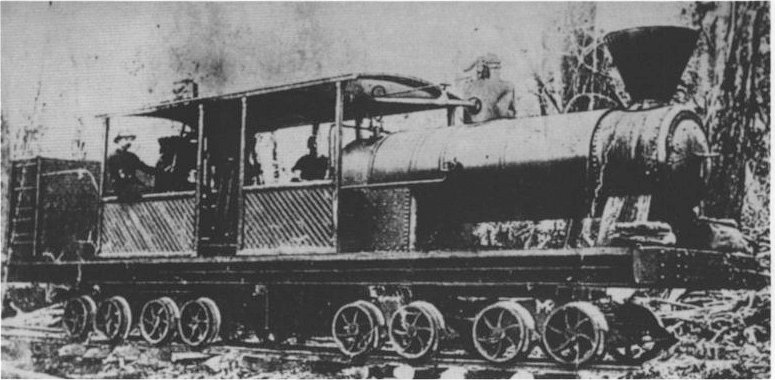
| Left: A Johnston 16-wheeler. The two-cylinder engine is mounted vertically at the rear of the cab.
The Johnston Type D 16-wheelers were built in New Zealand from 1910 onwards. They were designed to replace a team of horses for logging, and the weight on each axle on the wooden rails was supposed to be one ton only; the total weight was 16.25 tons, so that's pretty close. The design, with four powered bogies, was built under a Patent issued in 1909. It resembled a Shay locomotive in having a vertical engine, but here the engine was in the centre of the locomotive, and the drive shafts and the four universal joints required were more tidily placed between the frames.
Presumably this arrangement is denoted as a 2-2-2-2-2-2-2-2, or possibly a 2-2 + 2-2 + 2-2 + 2-2. I would happy to hear from those with strong opinions on this point.
At least 16 were built between 1910 and 1937. The average service life was around 23 years. None were preserved.
|
|








